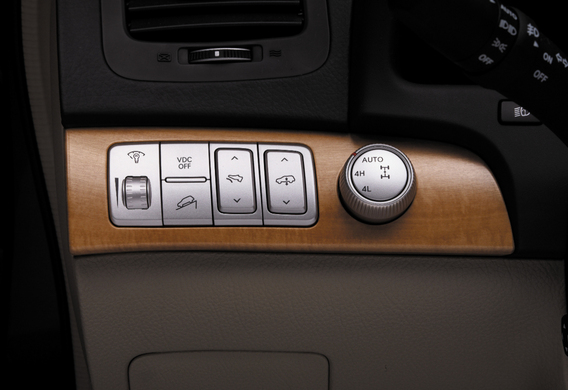
More recently, an increasing number of car companies are offering a series of full-drive models that pass the torque to all the wheels for the most off-road wheel.
The appearance of the four-wheel-drive trace has been linked to the first Jeep models, but its history has begun much earlier
Of course, the functions of the full drive have been calculated on rather difficult road conditions-it is suitable for SUVs or universal crossover cars. But that doesn't mean he can't be in the cars. The name "full drive" is the total, and the main types of this trace are three: full drive can be permanent, pluggable, if necessary, automatically attached.
Development of Engineering Thought
The four-wheel-drive trace has been linked to the first Jeep models, but its history has started much earlier. The 4x4 four-wheel drive first appeared on a steam locomotive (something between a car and a locomotive). The locomobiles could have been moved on the tracks and roads. The complete transmission was made in a single copy by English engineer Joseph Diploma in 1893. The historians argue the primacy of the invention of the drive on "real cars". In the arena the invention of Ferdinand Porsche was invented by an electric car with an individual engine on every wheel in 1900 and created by the Dutch racing Spyker, the 1905 HP 1905.
In the early 20th century, America and Europe produced quite a few cars with full power. And in the 1930s and 1940s, production reached a new level, as such vehicles were needed by the military. There was a modification that adapted the car to any conditions-an attached complete drive. On a level road the transmission was rear, the front axle was connected to the difficult sections. The switch was done by means of a lever or button, and the driver could regulate the system by tracking the sections of the road.
The Willys is the first military SUV among the models where the full drive was used. He made the appearance of the drive popular because it was easy to overcome the most difficult lifeless. A civilian car was subsequently introduced-Jeep CJ. The modern version of these models, which are considered classic part-time, was developed by the company Jeep in the late 1980s. It was Jeep Wrangler.
complete part part time today
Since the invention of the attached drive, its essence has changed little. The main difference between the classic part time and other types of complete drives is that it does not have a cross-axis differential. If the wheels were driving the differential, they could rotate at different speeds and turn easily and easily without extra effort on the part of the driver. In the case of the part-time, when the drive is connected, wheel shaft drives are rigidly connected and rotated at the same speed. This increases the strain on the transmission, which of course leads to stitening and possible breakdowns. The pressure is weakening only when the wheels can slide on the ground-snow, ice, mud, sand.
That is why it is recommended only on problem sections of the road, if you turn on the drivesk on a dry road it can just be dangerous-the car will be much worse to listen to the wheel. On good soil, the wheels are hard to pull when the system is powered on, but there is no equal part of the part time. Differential lowers the characteristics of the terrain, but with it the car is more docile on the regular road, so when choosing a drive, you have to take into account what is more important to you.
Today, this type of drive is used in cars, for which the first place is high terrain-in Russia these are many models of UAZ, from world-famous brands-Nissan Patrol, Jeep Wrangler, Mitsubishi Pajero, Suzuki Jimny.
Advantage and disadvantages
Of course, the classic part time system is a kind of "dinosaur." In the original, as the motorists say, "honest" it is used less frequently, because progress is not on the spot. The levers and buttons are replaced by smart electronics, which itself tracks sections of the road and enables or disables the transmission.
The use of classic part time is a force of habit and acquired experience. Plus, these cars are cheaper than the trendy universes that are packed with the latest electronics. The system is ideal for the day-to-day management of difficult sections of the road (for example, in the life of the city) or on extreme trips, but if the "difficulties of the way" are rare-such a machine will not be comfortable.
Minus of this transmission in the high fuel consumption, wear of the system when incorrect operation (this applies to the full-drive system, and tires). In addition, it is difficult to track the correct connection in a mixed road, whose properties change far too often (the asphalt, snow, or ice), the possible non-starkness of the machine under normal conditions.
Constant maintenance
Part time is changed-you don't have to turn on the drive only if you stop the car completely, get out of the car, or use a fine-looking box at a little speed. In advanced models, you can switch modes without reducing the speed, which makes life easier for the driver. Suzuki Jimny, Opel Frontera, Nissan Pathfinder are such opportunities.
The speed of the traffic shall not exceed 80 km/h. If you connect the drive at a higher speed, the car "beaks the nose" as if it was a sharp brake application. It is also important to remember that it is desirable to connect without advance, but already in the off-road.







